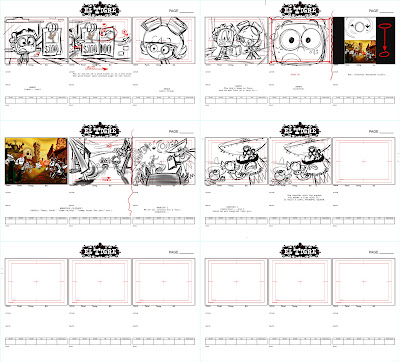Another benefit of the beatboard is it allows you to see the entire cartoon in a sort of outline form. This makes it a lot easier to control the visual structure – which is the storyboard equivalent of a story arc.
Bruce Block explains it much better in his book, The Visual Story, (which you really should go out and buy right now), but the basic idea is that as a story becomes more and more exciting, the visuals should get more exciting as well. The best way to create this excitement is through contrast.
It’s just like in character design, or any design for that matter:
variety = interest.
Several things that are alike, are going to be less interesting (or exciting) that things that are quite different.

When storyboarding, we have a lot of tools to create this variety with – and we want to make sure that we control them so that we can put the emphasis where we want it.
On Tigre we think a lot about on balanced compositions vs. imbalanced compositions, formal vs. informal shots, deep space vs. flat, and three dimensional character movements, vs. side to side.
To represent good people and safe places, we try keep things balanced and stable. The villains lairs we try to keep informally composed and unbalanced. Then when good and evil meet, we try to mix up the two to create maximum contrast – and hopefully interest.



























































